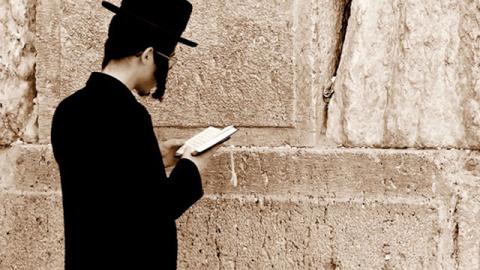
Does God Exist?
A group of scientists announced, “We no longer need God. We can now create human life out of nothing.” As the world watched, the scientists began shaping a human form out of earth.
“No, no,” God said. “Get your own dirt.”
If questions like, “Where did the gasses come from that caused the Big Bang?” or “How did the goo get there that everything evolved from?” don’t answer the question “Does God exist?,” here’s something else to ponder:
The Bible contains internal evidence that proves the Bible. How can that be? A lot is proved through history: God said something would happen and then years, centuries, even millennia later it happened exactly as He said it would. That’s something only God could do, proving He exists.
Examples include the prophecies about the birth and death of the Messiah fulfilled centuries later in Jesus.
Here’s another example:
God had Moses build a tabernacle around 1445 B.C., saying, “Make this tabernacle and all its furnishings exactly like the pattern I will show you” ( , emphasis mine).
The pattern was important because the tabernacle taught how sinners may approach the holy God and live. It showed God’s requirements to forgive and cleanse us from sin, and it served as the temporary way to fulfill his requirements until the permanent way came. Here’s how the tabernacle worked:
Outside the tabernacle stood a bronze altar where offerings were made before anyone could enter the tabernacle. Next to the entrance stood a bronze basin for washing.
Inside the tabernacle stood the Table of Bread, the Golden Lampstand, and the Altar of Incense representing the prayers of the people. A great curtain separated this main part of the tabernacle from the Most Holy Place where the Ark of the Covenant sat containing “the two tablets of the Testimony” ( ) representing the law of God. The penalty for breaking the law of God is death. However every one of us has broken at least one of these laws, which is why we need forgiveness and cleansing from sin: without it we will die, with it we gain eternal life in God’s presence.
The tent-tabernacle was used until Solomon built the permanent building-temple in Jerusalem in 960 B.C. Destroyed in 586 B.C., the temple was rebuilt in 536-516 B.C., then magnificently rebuilt by Herod in 20 B.C. The outer courts were still under construction while Jesus lived. When the Jewish authorities asked Jesus for a sign to prove his claim to be Messiah, he said, “Destroy this temple, and I will raise it again in three days” ( ). Three days?!
When Jesus died, he was crucified as a sacrifice just like those sacrifices performed on the Bronze Altar. Jesus had told Peter, “Unless I wash you, you have no part with me” ( ) showing Jesus washes us like the bronze basin. Like the Bread and Lampstand, Jesus said, “I am the bread of life” ( ) and “I am the light of the world” ( ). And because Jesus has made us right with God, our prayers are a sweet fragrance rising to him like incense.
When Jesus died, the curtain separating the Most Holy Place “was torn in two from top to bottom” ( ) and the way for us to enter God’s Most Holy Place was opened. In the Most Holy Place, blood from the sacrifices was sprinkled on the lid of the Ark of the Covenant. As God looks down upon his law inside the ark, he cannot look on it without looking through the blood and being reminded that blood has been shed for the breaking of his law.
As God looks upon us, filled with the sin of having broken his law, he must view us through the sacrificial blood of Jesus which covers everyone who believes in him.
Jesus said, “I tell you that one greater than the temple is here” ( ). Jesus died and rose to life. In three days.
In the tabernacle-temple God painted a picture of Jesus and fourteen hundred years later, Jesus, the Living Tabernacle, fulfilled the picture. That couldn’t happen by chance—that’s something only a God who exists could do.



